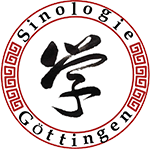
- This event has passed.
Prof. Shaoxin DONG (Fudan University, Shanghai, PR China): „The Introduction of the Term „ASIA“ into China and Chinese responses“
Abstract:
The three-continent system, including Europe, Asia and Africa, was invented by the ancient Greeks. In the Middle Ages, this system was explained in the Catholic theological context, which puts Jerusalem at the centre of T and O world map, and shows the continents as domains of the sons of Noah: Sem, Iafeth and Cham. In the Great Navigation period, European navigators found new routes to India and Far East, and “discovered” the new world, at the same time, the European conception that Asia was an independent and different continent was consolidated. But, as Herodotus comments, why three names were given to a tract which is in reality one? The answer could be that Europe needs an “other” for self-identification.
Chinese people had not known that their country was part of a big continent named Asia until Italian Jesuit Father Matteo Ricci drew his first world map (Shanhai yudi tu 《山海輿地圖》) in Zhaoqing in 1584. Through Matteo Ricci, Giulio Aleni, Francisco Furtado, Ferdinand Verbiest and other European Catholic missionaries, western geographical knowledge, including the conception of Asia, was introduced into China during late Ming and early Qing.
Western geography deeply changed Chinese traditional idea of Tianxia 天下, but the European conception of Asia hadn’t impacted Chinese thoughts strongly until in late Qing period, when Xu Jishe 徐继畲, Wei Yuan魏源, He Qiutao何秋涛 and other scholars accepted this conception in their famous books. At that time, facing to the big powers from west, China needed to rethink their idea of central empire, and construct an identity of their territory and neighbors. The conception of Asia was useful to do this, and Europe, accordingly, was looked as their “other”.
In the landmass so-called Asia, there were multi-cultures, different religions, and diverse identifications. So this tract is in fact not suitable to be perceived as a unit in any sense. The conception of Asia, from its beginning till now, is a result of construction and convention. In our times of globalization, do we still need this conception of Asia?
Short bio:
Shaoxin DONG is Professor of history at Fudan University, Honorable Professor of Exeter University (UK), and Fulbright Visiting Scholar at University of San Francisco (2015-2016). His research area include: History of Sino-European Cultural Relations in Early Modern Period, History of Chinese Christianity, History of Maritime East Asian, and History of Ming and Qing. In the past 15 years, he has published several books and more than 50 articles, such as Between Body and Soul: Western Medicine in China during 16-18 centuries (Shanghai, 2008), Antonio de Gouvea (1592-1677), A Portuguese Jesuit in China (Beijing, 2017). He has completed several research projects, and is now undertaking a new research program entitled “Ming-Qing Wars in European Sources” (National Social Science Fund, 2017-2021).
